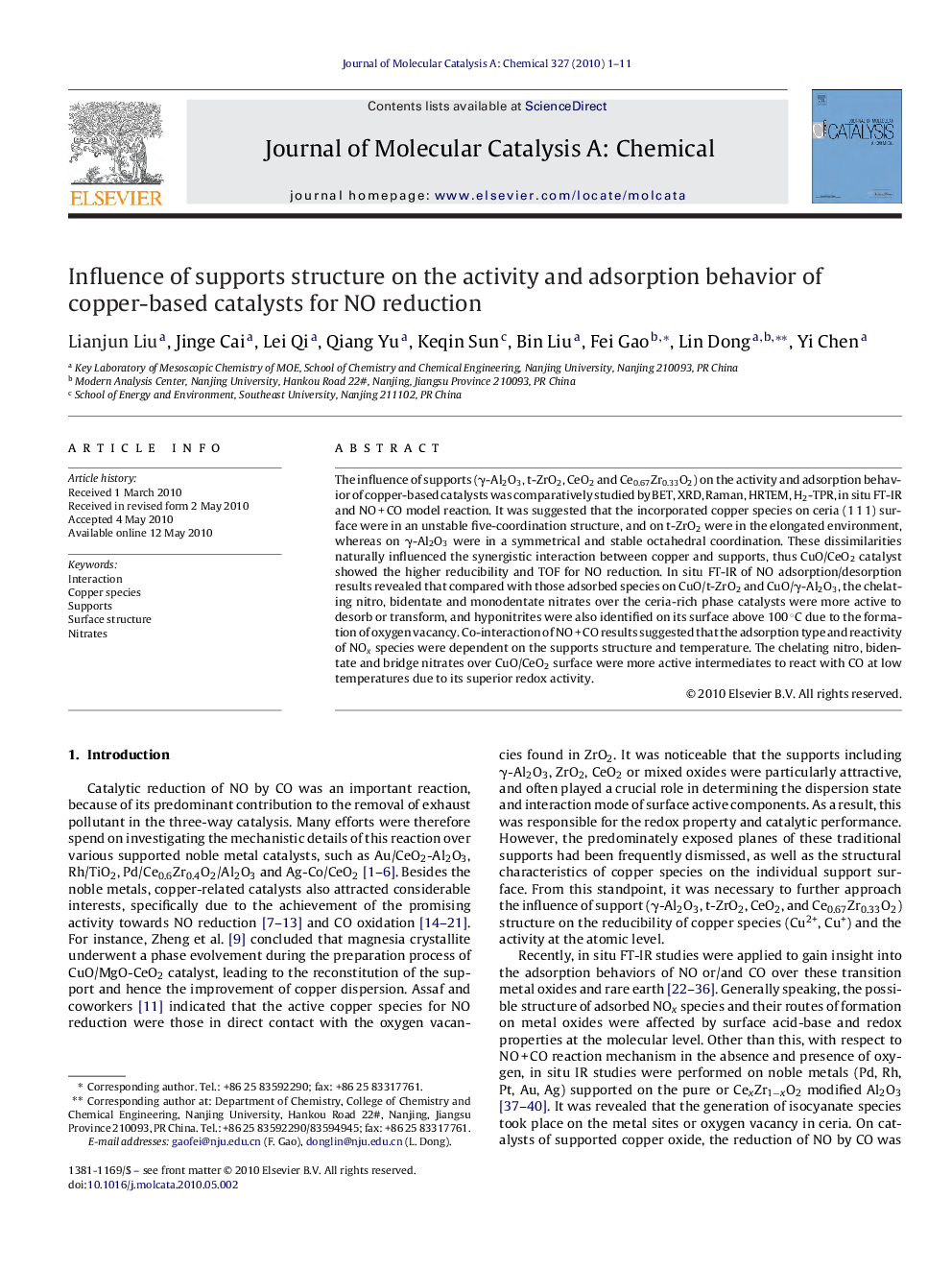| Article ID | Journal | Published Year | Pages | File Type |
|---|---|---|---|---|
| 66703 | Journal of Molecular Catalysis A: Chemical | 2010 | 11 Pages |
The influence of supports (γ-Al2O3, t-ZrO2, CeO2 and Ce0.67Zr0.33O2) on the activity and adsorption behavior of copper-based catalysts was comparatively studied by BET, XRD, Raman, HRTEM, H2-TPR, in situ FT-IR and NO + CO model reaction. It was suggested that the incorporated copper species on ceria (1 1 1) surface were in an unstable five-coordination structure, and on t-ZrO2 were in the elongated environment, whereas on γ-Al2O3 were in a symmetrical and stable octahedral coordination. These dissimilarities naturally influenced the synergistic interaction between copper and supports, thus CuO/CeO2 catalyst showed the higher reducibility and TOF for NO reduction. In situ FT-IR of NO adsorption/desorption results revealed that compared with those adsorbed species on CuO/t-ZrO2 and CuO/γ-Al2O3, the chelating nitro, bidentate and monodentate nitrates over the ceria-rich phase catalysts were more active to desorb or transform, and hyponitrites were also identified on its surface above 100 °C due to the formation of oxygen vacancy. Co-interaction of NO + CO results suggested that the adsorption type and reactivity of NOx species were dependent on the supports structure and temperature. The chelating nitro, bidentate and bridge nitrates over CuO/CeO2 surface were more active intermediates to react with CO at low temperatures due to its superior redox activity.
Graphical abstractThe copper species on the surface of γ-Al2O3, t-ZrO2, CeO2 and Ce0.67Zr0.33O2 were in different coordination environments, which naturally influenced their activity, reducibility, adsorption type and reactivity of NO.Figure optionsDownload full-size imageDownload high-quality image (520 K)Download as PowerPoint slide
